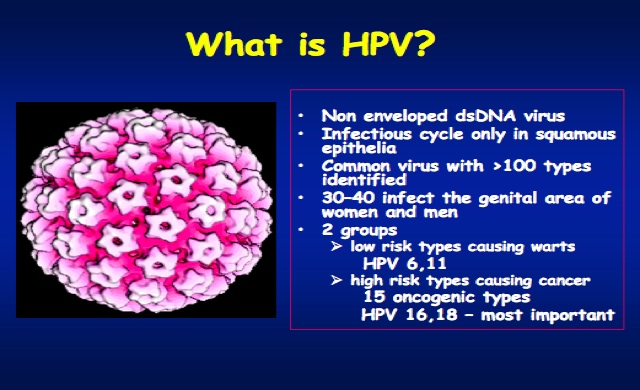SUMMARY
This is AI generated summarization, which may have errors. For context, always refer to the full article.
MANILA, Philippines – Every day there are 12 Filipino women who die from cervical cancer. In 2007, this number was 10. Because cervical cancer is often detected in its late stages, the mortality rate is high.
According to the World Health Organization (WHO), in the Philippines, cervical cancer ranks as the 2nd most common cancer in women between the ages of 15-44, next to breast cancer.
These facts are unfortunate considering that cervical cancer is highly preventable with early detection through screening and vaccination.
Why is it that despite information campaigns about HPV or the human papillomavirus (the virus that causes cervical cancer, genital warts and other cancers of reproductive organs) and the importance of vaccination, there has been an increase in incidence of the disease?
This was the question medical professionals attempted to answer at the HPV Summit last January 25.

Early detection and vaccination
Professor Margaret Stanley of the University of Cambridge in the United Kingdom shared the results of a national HPV vaccination program.
“It is clear that in the prevention of cervical cancer, early detection and vaccination is key,” said Stanley, explaining why the UK Ministry of Health led this initiative.
The program was school-based and administered to girls between the ages of 12-13, with a catch up program for teenagers up to 18 years of age.
Information campaigns were used to communicate facts about cervical cancer and the importance of vaccination to both parents and children and both had to give their consent to receiving the vaccinations. For the parents, the information campaigns (also an initiative of the UK Ministry of Health) used traditional media, while for the kids, the Internet, Facebook, and chatrooms were used.
“To the parents, the main message was very clear: This can help your daughter from getting cancer someday,” said Stanley. “While for the children, it was as simple as this will help prevent you from getting sick with something yucky in the future.”
Stanley said that the latter was a similar message she used when talking to her 12-year-old who got the vaccine. The other side of HPV, how it is contracted through genital contact, which often stigmatizes the disease, was not an issue to the parents or the children.
“The parents were glad that it was done at the age of 12-13 before they would have to talk to their girls about sex. The kids, on the other hand, don’t even know what ‘sex’ is. They know the term and may use it, but they don’t really know what it is,” explained Stanley.
As a result of the program, about 80% of the school girls eligible for the program received the prescribed 3 doses of the vaccine.
Speaking about the Philippines, Stanley said, “Well, better awareness can also lead to better reporting. This may be one of the causes of the rise in the incidence of cervical cancer. However, one cannot discount the importance of screening and vaccination in decreasing the incidence of this preventable disease.”
The UK has a cervical cancer incidence of 7.2 per 100,000 compared to the Philippines at 11.7 per 100,000.

Mother-Daughter Initiative in the Philippines
Dr Enriquito Lu, technical director of the Cervical Cancer Prevention Program (CECAP) shared the results of a “Mother-Daughter Initiative” (MDI) to screen mothers and give their daughters HPV vaccination.
The MDI, which was a program of Jhpiego (an international non-profit health organization affiliated with Johns Hopkins University) and pharmaceutical giant, MSD, was conducted in 3 pilot areas: Minglanilla in Cebu, Pagbilao in Quezon, and Los Baños in Laguna.
Through the two-year program, which was administered at the barangay health units, mothers were screened for cervical cancer and were encouraged to bring in their daughters between the ages of 9-13 for HPV vaccination.
At the end of the two-year program, Lu reported that there was an 88.1% adherence to the 3 doses of the vaccine. Over 7,000 mothers were screened and 4,000 daughters were given HPV vaccination.
Among the challenges Lu cited in implementing the program were manpower capability and the schedule of the girls. “Most of the girls are in school during the time the clinics are open. Some of the healthcare workers had to extend their hours to accommodate the girls.”
“In the (case of the) UK and in the Philippines, it is clear that the technology best for detecting cervical cancer is the pap smear. It is not the technology that is the question. It is making this technology available to women that is the problem,” said Lu.
Studies show that it takes 20-25 years for the HPV virus to develop to cancer of the cervix. Thus, regular screening through a pap smear can detect potentially pre-cancerous, cancerous processes, and other abonormalities of the female reproductive system.
Sin Tax for health initiatives
Dr Eric Tayag, assistant secretary of the DOH, who was also at the HPV Summit, commented on the possibility of a national HPV vaccination program.
Acknowledging the approval of the Sin Tax Law earlier this month, from which a large percentage of the money raised will go to government healthcare programs, Tayag cautioned, “There have been earmarked investments already and it will be a competition among many other priorities. Needless to say, vaccination is a priority of the DOH.”
The Sin Tax law aims to raise P33 billion ($800 million) from the additional levy on cigarettes and alcohol this year alone.
The Philippine Cancer Organization estimates that 6,000 women are diagnosed with cervical cancer every year and 4,349 die from the disease. About 5 out of 10 women diagnosed with cervical cancer will die within 5 years. – Rappler.com
Add a comment
How does this make you feel?
There are no comments yet. Add your comment to start the conversation.